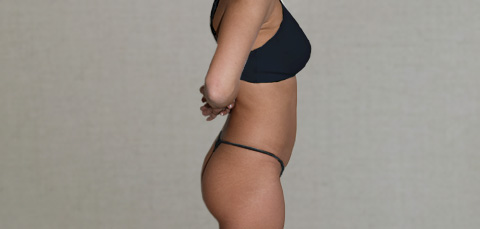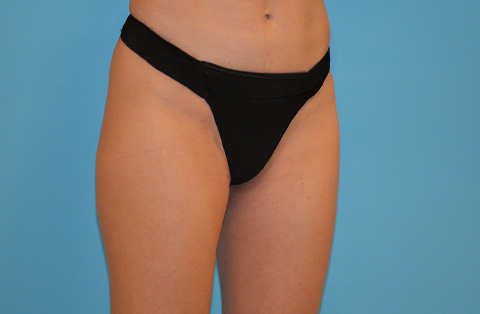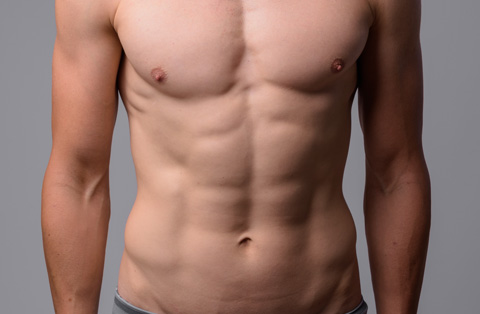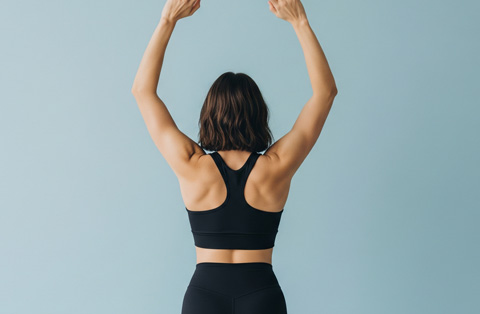An upper body lift surgery, following massive weight loss, offers a transformative solution for individuals who are troubled by excess skin on their upper back, arms, and chest. This procedure not only tightens and tones the upper body but also enhances posture and comfort, making clothing fit better and boosting self-confidence.
As weight loss journeys conclude, many find that the remaining excess skin serves as a reminder of their previous selves, obstructing the full enjoyment of their new, healthier bodies.
This article will guide you through the benefits, procedure details, risks, and recovery expectations associated with upper body lift surgery. Dive into the essentials of how this life-enhancing surgery can rejuvenate not just your appearance but your quality of life.
What is an Upper Body Lift?
An upper body lift is a cosmetic surgery that removes excess skin and fat from the upper back, chest, and arms. This procedure is common after significant weight loss. It tightens and contours these areas, enhancing the body's shape and improving the fit of clothes.
Plastic surgeons tailor the surgery to each individual's needs, ensuring a more natural and youthful appearance. The result boosts self-esteem and comfort, especially for those who have lost a lot of weight.
Who Needs Upper Body Lift?
People who might need an upper body lift include:
Individuals who have experienced significant weight loss and are left with excess skin in the upper back, arms, and chest areas.
Patients who have undergone bariatric surgeries like gastric bypass or gastric sleeve and have achieved major weight loss goals, resulting in loose skin.
Those with skin laxity due to aging, which often causes sagging skin in the upper body.
Anyone looking to improve the contour and shape of their upper body for aesthetic enhancement.
Persons who feel discomfort or experience lifestyle limitations due to excess skin, such as difficulty finding clothes that fit well or engaging in physical activities.
People seeking to boost their self-esteem and body image after transformative weight changes.
Benefits of Upper Body Lift
Improved Contour and Shape: Enhances the overall appearance of the upper body by removing excess skin and fat, creating a more toned and defined look.
Increased Comfort: Reduces the discomfort associated with excess skin, including chafing and irritation.
Better Clothing Fit: Clothes fit more comfortably and look more flattering without the bulk of excess skin.
Enhanced Mobility: Makes physical activities and exercise easier and more enjoyable without the extra skin hindering movement.
Boosted Self-Esteem: Improves body image and confidence, helping individuals feel more positive about their appearance.
Lasting Results: Provides long-lasting outcomes, especially when combined with a stable weight and healthy lifestyle.
Reduction in Skin Infections: Decreases the risk of skin infections and dermatitis that can occur in folds of excess skin.
What is included in an upper body lift?
An upper body lift typically includes several procedures that focus on removing excess skin and fat, and tightening the remaining tissues in the upper region of the body. This can involve:
Brachioplasty (arm lift): Reshapes the under portion of the upper arms.
Breast lift: Elevates and firms the breasts.
Back lift: Removes rolls and excess skin from the upper and mid-back area.
Gynecomastia: For males, this might involve reducing enlarged breasts.
Liposuction: Often accompanies the skin removal to better contour the area.
Surgeons tailor these components to meet the specific needs of the patient, ensuring a harmonious overall appearance. The goal is to create a smoother, more youthful profile that reflects the patient's weight loss and health improvements.
Upper Body Lift Procedure Step by Step
An upper body lift procedure is a comprehensive approach to contouring the upper body after significant weight loss. Here's a detailed step-by-step guide to the process:
Initial Consultation: Schedule a consultation with a qualified plastic surgeon to discuss your goals, medical history, and expectations. The surgeon will assess your skin quality and determine the areas that need treatment.
Pre-operative Assessment: Undergo a series of medical tests to ensure you are fit for surgery. This may include blood tests and cardiovascular assessments. Follow the surgeon’s instructions regarding medications and pre-surgery preparations.
Anesthesia: On the day of surgery, you'll receive general anesthesia to ensure you are comfortable and pain-free throughout the procedure.
Making Incisions: The surgeon makes precise incisions in predetermined locations. These locations typically include the underarms, back, and chest areas, depending on the extent of excess skin.
Removing Excess Skin and Fat: The surgeon removes excess skin and may perform liposuction to remove unwanted fat, enhancing the body's contours.
Tightening Tissues: After removing the excess skin and fat, the surgeon tightens and reshapes the underlying tissues to create a smoother, more defined upper body silhouette.
Closing Incisions: The incisions are carefully sutured to minimize scarring and promote healing. Special techniques are used to ensure the scars are as inconspicuous as possible.
Recovery: Immediately after surgery, you will be taken to a recovery area where your vital signs are monitored. You may need to stay in the hospital for a day or two.
Post-operative Care: Follow detailed instructions for home care, including managing drains, taking prescribed medications, and attending follow-up visits. Recovery typically involves wearing compression garments to reduce swelling and support the new contours.
Follow-Up Appointments: Attend follow-up appointments to monitor your healing and progress. The surgeon will check the surgical sites and remove sutures if necessary.
The upper body lift is a transformative procedure that requires careful planning and post-operative care to achieve the best results and minimize complications.
Comparing Body Lift Procedures
Body lift procedures target different areas of the body to remove excess skin and fat, particularly after significant weight loss. Each type of lift addresses specific concerns and areas, improving overall body contour and appearance.
Upper Body Lift: This procedure focuses on the arms, back, and breasts. It is ideal for removing "bat wings" on arms and tightening loose skin around the upper back and chest area. This lift can dramatically improve the fit of clothing and is often sought by those who have upper body sagging due to aging or weight loss.
Mid-Body Lift: The mid-body lift primarily targets the abdominal region and lower back. This includes a tummy tuck (abdominoplasty) and may involve lifting the flanks and lower back areas. It's perfect for reshaping the waistline and removing "love handles."
Lower Body Lift: Also known as a belt lipectomy, this lift focuses on the buttocks, hips, thighs, and abdomen. It involves removing excess skin and fat that circles the body like a belt, providing a more lifted and toned appearance from the waist down.
Total Body Lift: This comprehensive procedure combines upper, mid, and lower body lifts. It is designed for individuals who have undergone massive weight loss that has left significant excess skin throughout the body. It offers the most dramatic transformation.
Comparison Chart of Body Lift Types
Feature | Upper Body Lift | Mid-Body Lift | Lower Body Lift | Total Body Lift |
Targeted Areas | Arms, back, breasts | Abdomen, lower back | Buttocks, hips, thighs, abdomen | Entire body |
Main Benefits | Removes "bat wings", tightens upper back | Reshapes waistline, removes love handles | Tones lower body, lifts buttocks | Comprehensive transformation |
Ideal For | Excess upper body skin post-weight loss | Those with sagging around the waist | Significant sagging around hips and buttocks | Extensive weight loss with excess skin overall |
Recovery Time | Varies by extent of surgery | 2-4 weeks | 2-6 weeks | 4-8 weeks |
Considerations | May require multiple surgeries | Includes tummy tuck | Extensive surgery around the lower torso | Longest recovery, most dramatic results |
Each procedure offers unique benefits depending on the patient's needs and areas of concern. Understanding these distinctions helps in choosing the right surgery for optimal body rejuvenation.
Recovery After an Upper Body Lift
Recovery after an upper body lift varies by individual but generally follows a predictable path. Immediately after surgery, patients often experience swelling and discomfort, which medications can manage. Surgeons usually recommend wearing compression garments to reduce swelling and support the new body contours. These should be worn for several weeks.
Patients typically need to take one to two weeks off from work, depending on the job's physical demands. During the first few weeks, it is crucial to avoid strenuous activities and heavy lifting to allow the body to heal properly. Light walking is encouraged to promote circulation.
Follow-up visits are essential to monitor healing and address any concerns. The surgeon will check the incision sites and assess the progress of the recovery. Full recovery and the final results can take several months as the swelling subsides and the body adjusts to its new shape.
Upper Body Lift Before and After



Before an upper body lift, patients often have excess, sagging skin due to weight loss or aging. After the procedure, the skin appears tighter and more contoured. The arms, back, and chest show significant improvement, enhancing the overall body silhouette. Results can greatly boost confidence and comfort, providing a more youthful and toned appearance.
Upper Body Lift Costs
The cost of an upper body lift can vary widely based on several factors including the surgeon's expertise, the complexity of the procedure, and the geographical location.
Generally, the price includes the surgeon's fee, anesthesia, hospital or surgical facility costs, and post-surgery garments. Additional costs may include pre-surgical tests, follow-up care, and medication.
Typically, insurance does not cover cosmetic procedures like upper body lifts unless they are performed for medical reasons, such as eliminating skin infections caused by excess skin.
Therefore, it is crucial for patients to discuss all potential costs with their surgeon during the consultation phase.
Compare Lower Body Lift Surgery Costs
Country | Average Price Range (Euros) |
Turkey | €3,000 - €5,000 |
UK | €6,500 - €9,000 |
France | €7,000 - €10,000 |
Germany | €8,000 - €11,000 |
USA | €10,000 - €15,000 |
Italy | €7,000 - €10,000 |
Spain | €6,000 - €8,500 |
This chart provides an overview of average costs for lower body lift surgery in various countries. Prices can vary within countries based on the surgeon's experience and the specific needs of the patient.
Potential Risks and Complications
Here is a list of potential risks and complications associated with upper body lift surgery:
Scarring: Despite surgical techniques that aim to minimize them, visible scars are inevitable.
Infection: Any surgery carries a risk of infection, which may require antibiotics or additional treatment.
Bleeding: There is a risk of bleeding during or after surgery, which can sometimes require further intervention.
Poor Wound Healing: Some patients may experience delayed healing of the surgical wounds.
Seroma: Fluid accumulation at the surgery site may occur, sometimes requiring drainage.
Numbness or Changes in Skin Sensation: Temporary or permanent changes in skin sensation may occur.
Asymmetry: The contours of the body may be uneven, which could require additional procedures to correct.
Anesthesia Risks: Complications from anesthesia can include allergic reactions, blood clots, and even more severe effects.
Persistent Pain: Some patients may experience ongoing pain in the areas treated.
Deep Vein Thrombosis (DVT) and Pulmonary Embolism: Blood clots can form in the legs and travel to the lungs, which is a serious condition.
Skin Loss: In rare cases, skin loss can occur due to poor blood circulation to the area.
Revision Surgery: Due to complications or unsatisfactory results, additional surgery may be necessary.
It's essential for patients to discuss these potential risks with their surgeon to make an informed decision about proceeding with an upper body lift.






